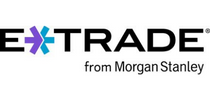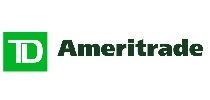Mutual funds are often mentioned in conjunction with exchange-traded funds (ETFs), but they’re really two very distinct fund types. And while index-based ETFs have been rising in popularity in recent years, even surpassing actively managed mutual funds for the first time in 2019, mutual funds definitely have a place in many portfolios.
That’s because while index-based funds simply match the performance of the underlying market, actively managed mutual funds attempt to outperform it. They don’t always succeed, at least over the long term, but the prospect is attractive to many investors.
But investing in mutual funds is an investment process all its own. Even if you’ve never invested in mutual funds before, I’ll cover the whole process in this guide.
What’s Ahead:
What is a mutual fund?

A mutual fund is a type of professionally managed investment that pools your money with other investors. It’s a pool of funds provided by many different investors, then invested in a portfolio of securities that can include stocks, bonds, money markets, and even other mutual funds. Because of this, mutual funds provide the easiest way of maintaining the right mix of investments.
Think of mutual funds as something like an investment portfolio with a very specific purpose.
They’re managed by a fund manager
A mutual fund is managed by a fund manager who has extensive experience in professional investment management. In some cases, a fund can have multiple managers.
The manager will allocate the funds among different securities, based on the stated purpose of the fund. That purpose might center on a specific industry sector, like healthcare, technology, energy, utilities, retail, real estate, or virtually any other investment sector you can think of.
The many variations that mutual funds give investors very specific choices, not only of which sectors to invest in, but also under what terms.
They’re ready-made portfolios
Each mutual fund provides the investor with a ready-made managed portfolio of securities. It gives the investor an opportunity to spread a single investment across dozens or even hundreds of individual securities.
Mutual funds may also invest in fixed income securities, like corporate bonds, high-yield bonds, municipal bonds, or U.S. Treasury securities of various terms. Some bond funds are hybrids, offering a mix of two or more of any of the above bond types.
For most individual investors, mutual funds provide the easiest way of maintaining the right mix of investments. To achieve the same thing on your own you need a lot of money to invest and lots of time to manage your investments.
On the downside, mutual funds have costs that can eat into your investment returns. Sophisticated investors may also find that mutual funds offer less control over the timing of gains and distribution of income.
Types of mutual funds
Mutual funds provide an easy way to invest for any type of goal (short or long term) with almost any amount of money.
The bad news is that choosing a mutual fund can be overwhelming since there are thousands of funds. How do you pick?
First, you narrow the field. Here’s what you need to know.
Open- vs. closed-end funds
Most funds you’ll be interested in are open-end mutual funds, meaning they will continue to issue shares as long as investors want to buy them.
Index (passive) funds vs. actively managed funds
Mutual funds can be either index funds or actively managed funds. Index funds are funds that invest in popular stock indexes, like the S&P 500. These are known as passively managed funds because the portfolio is set up and managed based on the composition of that index.
The fund doesn’t trade stocks unless the composition of the index changes. Because there’s very little turnover in index funds, they tend to generate little in the way of taxable capital gains.
Actively managed funds are not tied to an index and may allow the manager to trade securities as they see fit to maximize fund performance.
You want to favor an index fund if you prefer passive investing, and are content to simply match the performance of the general market. Another advantage to these funds is they have significantly lower fees. But if you hope to outperform the market, you’ll want to choose actively managed mutual funds.
Generally speaking, mutual funds tend to be actively managed, while exchange-traded funds (ETFs) are much more likely to be index funds.
Target-date funds
Target-date funds, sometimes referred to as a fund of funds are based on a specific investment timeframe. For example, if you’re 30 years old in 2020, and you plan to retire at 65, you can invest in a target-date fund set up to invest through 2055. Naturally, this kind of fund is very popular in retirement planning.
Balanced funds
Balanced funds are mutual funds that invest in both stocks and fixed-income securities. They’re known as balanced funds because each represents a portfolio of both stocks and bonds.
These funds have an advantage in that they represent a complete portfolio. You won’t need to allocate your portfolio between equity investments and fixed income investments – a balanced fund will include both.
Balanced funds may invest in either individual securities or other mutual funds. And though the securities and funds included in the fund may be bought and sold, the allocation between equities and fixed income remains constant.
How to invest in mutual funds

Buying mutual funds
Like virtually every other type of investment, mutual funds have their own terminology and processes. For example, the price of a mutual fund share is referred to as its net asset value, or NAV. The NAV is determined by dividing the total value of the fund by the total number of shares outstanding.
For example, if a mutual fund has a total value of $1 billion, and 50 million shareholders, the NAV will be $20. It will also decline after the payment of a dividend, interest, or capital gains distribution, reflecting the amount of that payment.
Unlike stocks and ETFs, the NAV of a mutual fund doesn’t fluctuate during market hours. Instead, it settles at the end of each trading day.
Selling mutual funds
You should be aware that mutual funds are not quite as liquid as other types of investment vehicles, like individual stocks or ETFs. While other securities can be sold at any time during the trading day, mutual fund sales take place only at the end of the trading day.
Minimum investments
Mutual funds almost always have a minimum required investment. This usually varies between $1,000 and $3,000, but it can be higher – even much higher – with certain funds. The minimum may vary by fund families, or by individual funds with family.
Where to invest in mutual funds
Mutual funds can be invested in through a wide variety of sources, but primarily investment brokers and mutual fund families. Four of the most popular include the following:
TD Ameritrade
TD Ameritrade offers a whopping 13,000+ mutual fund choices. Plus, many of those will be no-transaction-fee (NTF) funds. Plus, TD Ameritrade is king when it comes to educational resources. They offer a “Mutual Fund Toolbox” that includes tools like Mutual Fund Screeners, Focus List, and Morningstar Instant X-Ray℠.
With these helpful tools, you’ll be able to fully understand your options before choosing a mutual fund.
E*TRADE
 E*TRADE gives you a choice of more than 7,000 mutual funds, including over 4,400 no-load, no transaction fee mutual funds. And, if you need a bit of guidance along the way if you have trouble choosing the right funds, E*TRADE offers Financial Consultants that can help.
E*TRADE gives you a choice of more than 7,000 mutual funds, including over 4,400 no-load, no transaction fee mutual funds. And, if you need a bit of guidance along the way if you have trouble choosing the right funds, E*TRADE offers Financial Consultants that can help.
E*TRADE also offers commission-free trading on stocks, options, and ETFs, making them a well-rounded option, especially for beginner investors just learning the ropes.
Vanguard
 Vanguard is an investment broker that’s also one of the very largest issuers of mutual funds in the world. In fact, the company offers more than 120 proprietary mutual funds that are some of the most popular in the industry.
Vanguard is an investment broker that’s also one of the very largest issuers of mutual funds in the world. In fact, the company offers more than 120 proprietary mutual funds that are some of the most popular in the industry.
What’s more, Vanguard mutual funds are offered commission-free. Their expense ratios are also among the lowest in the mutual fund industry.
One of the biggest arguments in favor of Vanguard mutual funds is that they are some of the most popular funds held in retirement plans and portfolios managed by investment advisors.
You’ll need a minimum of $1,000 to invest in a Vanguard mutual fund, though some can be as high as $10,000.
Mutual fund fees
There are three fees to be aware of when investing in mutual funds:
1. Load fees
These are sales fees charged by some mutual funds. They can range between 1% and 3% of the value of the fund, but some are higher. However, an increasing number of mutual funds don’t charge load fees and are known as no-load funds.
2. Expense ratios
Formally known as 12b-1 fees, these are costs incurred by the fund to manage and market it. They typically range between 0.25% and 1% of the fund’s value, and are incurred each year you’re invested in the fund.
Since the fees are charged internally – by deduction from the NAV – you won’t see them as a line item charge on your investment statement. But you should be aware of them because they reduce the annual return of the fund. Naturally, you should favor funds that have expense ratios on the lower end of the range.
3. Broker commissions
Most major brokerage firms now charge no commissions on trades of stocks, options, and ETFs. But the same firms often charge commissions on the purchase and sale of mutual funds.
These can range anywhere from $10 to $75 per trade, though many firms will offer a selection of no-fee mutual funds.
Tax considerations
Mutual funds generate income…which comes with income tax
Mutual funds, particularly actively managed ones, generate dividend or interest income, as well as capital gains and losses. This will occur in each year you own a mutual fund, even if you don’t buy or sell positions in the fund itself.
Because the securities within the fund generate either dividends or interest income, that income will become taxable in the year it’s received.
The same is true of capital gains. Because an actively traded mutual fund can make dozens or potentially hundreds of security trades within a single year, each trade will generate either a gain or loss. That means the fund will have gains and losses virtually every year.
Losses and gains need to be reported
If those capital transactions work out to be a net loss, you’ll have a capital loss to declare on your income tax return. If it generates gains, they’ll be broken out between short-term and long-term capital gains.
Short-term capital gains are gains on securities held one year or less. That income must be reported on your income tax return and will be subject to your ordinary income tax rate. Long-term capital gains are gains generated on securities held for more than one year. As long-term capital gains, they are subject to lower, long-term capital gains tax rates.
Put another way, a typical mutual fund will create taxable income or losses each year, even if you never buy or sell portions of the fund itself.
Why should you invest in mutual funds?

There are several reasons why investors choose to invest in mutual funds.
Professional investment management
Most investors lack either the time, the expertise, or the motivation to actively manage their investments. With a mutual fund, the fund manager handles that for you. That includes the construction of the portfolio, selection of securities within it, and the periodic buying and selling of securities as deemed necessary to improve the performance of the fund.
When you invest in a mutual fund, you can simply invest and forget. All the management details are handled for you, and you’re free to go about the rest of your life.
Portfolio diversification
First, each mutual fund is a portfolio of securities that could number anywhere from a few dozen to several hundred. That will enable you to invest in a ready-made portfolio with a fixed amount of money. If you were to attempt to create a similar portfolio, you may not have sufficient funds to achieve that level of diversification.
But apart from diversification within a mutual fund, there’s also the potential to spread your money across several different funds. For example, you can put money in one fund that invests in the general market, then add funds invested in specific industry sectors you think will outperform the general market.
Opportunity to outperform the general market
Unlike index-based funds, actively managed mutual funds do attempt to outperform the general stock market. They do this by buying positions in companies the fund manager believes will outperform the market, while selling off those companies likely to underperform.
At the same time, you should be aware that the vast majority of actively managed mutual funds fail to outperform the general market over the long term. However, that doesn’t mean a well-positioned fund won’t outperform it over the near-term.
Much like attempting to pick stocks that will outperform the market, looking for the same in a mutual fund is a hit-or-mostly-miss process.
Summary
While it’s probably true that most investors will be best served by investing the majority of their portfolio in index-based exchange-traded funds, many still have a desire to invest in a way that holds the potential to outperform the market.
Mutual funds represent something of a halfway between index funds and individual stocks. You’ll be investing in individual stocks, but you won’t have to choose those securities yourself, and they’ll be incorporated into a diversified portfolio.
That portfolio will provide you with at least an opportunity to outperform the market, without taking on all the higher risks associated with owning individual stocks. You might want to consider investing in mutual funds as a way of tiptoeing into active investment management, before eventually moving into choosing your own stocks.
Read more:
Vanguard Disclosure - For more information about Vanguard funds and ETFs, visit vanguard.com to obtain a prospectus or, if available, a summary prospectus. Investment objectives, risks, charges, expenses, and other important information about a fund are contained in the prospectus; read and consider it carefully before investing.All investing is subject to risk, including the possible loss of the money you invest.
Vanguard Digital Advisor® services are provided by Vanguard Advisers, Inc. (“VAI”), a federally registered investment advisor. VAI is a subsidiary of VGI and an affiliate of VMC. Neither VAI nor its affiliates guarantee profits or protection from losses.
Vanguard Digital Advisor is an all-digital service. Digital Advisor charges a 0.20% annual gross advisory fee to manage Vanguard Brokerage Accounts for a typical Digital Advisor managed portfolio. The gross advisory fee is reduced by a credit of the actual revenue The Vanguard Group, Inc. ("VGI"), or its affiliates retain from investments in each enrolled account, resulting in a net advisory fee that will be the actual fee collected from your account. A typical Vanguard ETF® portfolio will be credited approximately 0.05%, resulting in a net advisory fee of approximately 0.15%. The actual net fee amount will vary based on your unique asset allocation, account type, and specific holdings in each enrolled account. Note that this fee doesn't include investment expense ratios, but we generally recommend using low-cost Vanguard funds to build your portfolio. For more information on the services, see the Form CRS and the Vanguard Digital Advisor Brochure.
Vanguard Marketing Corporation, Distributor of the Vanguard Funds.



